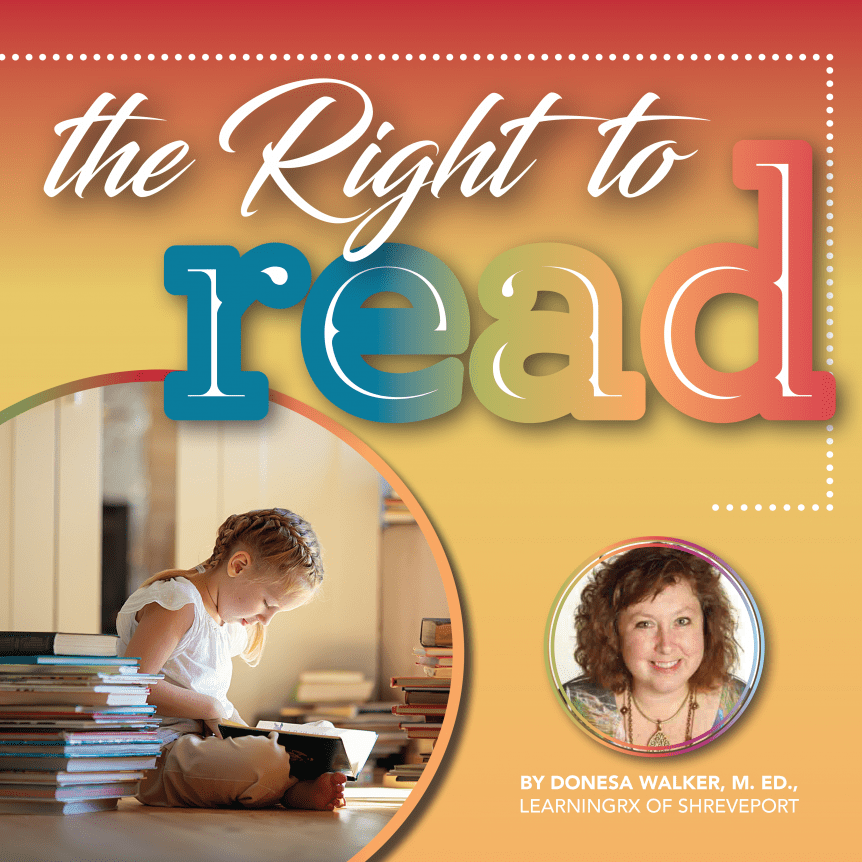There are lots of discussions out there about voting and rights which are very important to discuss, but one simply cannot overlook the fact that over 80 percent of Americans cannot read the ballot.
I know that is a stunning amount, but America is at an all-time low in literacy and due to COVID school closures this is a growing trend.
Literacy at the fourth-grade level for America is below 50 percent and only 12 percent can read at a high enough level to get the legal language of a ballot. Louisiana is 41st out of 50 states in literacy! Unacceptable!
Why then are we not challenging this right to pursue happiness and ease of learning? Why are we settling for the status quo? How do we make a difference in our community? So glad you asked!
According to The Literacy Company and U.S. Census Bureau, which underscore the critical need to address illiteracy in the United States:
- Currently, 45 million Americans are functionally illiterate and cannot read above a fifth-grade level
- 50 percent of adults cannot read a book written at an eighth-grade level
- 57 percent of students failed the California Standards Test in English
- 1/3 of fourth-graders barely reach the proficient reading level
- 25 percent of students in school systems are able to perform basic reading skills
- 85 percent of juvenile offenders have problems reading
- 3 out of 5 people in American prisons can’t read
- 3 out of 4 people on welfare can’t read
The brain is a terrific tool but it needs stimulation in order to grow something as complicated as the skill of reading, especially in light of learning issues like dyslexia. Did you know that 2 out of 5 kids struggle with reading issues and 20 percent of our population has dyslexia? Training the brain and identifying these weaknesses early is key to making change. Getting assessments on cognitive abilities and knowing where the child struggles can open the door to a world of learning. How can you be the difference for your own child and those around you?
The Literacy Project says, “If you’re a parent and want a deeper dive at the situation, read below for a collection of stats in keys areas in child literacy to help prepare you to make a difference in the lives of your children:”
- By age 2, a child’s brain is as active as an adult’s and by age 3 the brain is more than twice as active as an adult’s – and stays that way for the first 10 years of life.
- Cognitive processes develop rapidly in the first few years of life. In fact, by age 3, roughly 85 percent of the brain is developed. However, traditional education takes place in grades K-12, which begins at age five.
- According to the Department of Education, the more students read or are read to for fun on their own time and at home, the higher their reading scores, generally.
- Reading and being read to has an impact that extends beyond just hearing stories.
- 65 percent of America’s fourth-graders do not read at a proficient level.
- In a study of nearly 100,000 U.S. schoolchildren, access to printed materials was the key variable affecting reading acquisition.
- Children’s academic successes at ages 9 and 10 can be attributed to the amount of talk they hear from birth through age 3. Young children who are exposed to certain early language and literacy experiences also prove to be good readers later on in life.
- Books contain many words that children are unlikely to encounter frequently in spoken language. Books for kids actually contain 50 percent more words that children are unlikely to encounter frequently than regular conversation, TV or radio.
- The National Center for Education Statistics (NCES) found that children who were read to frequently are also more likely to: count to 20 or higher than those who were not (60 percent vs. 44 percent), write their own names (54 percent vs. 40 percent), read or pretend to read (77 percent vs. 57 percent)
- Higher reading exposure was 95 percent positively correlated with a growing region supporting semantic language processing in the brain.
- The most important aspect of parent talk is its amount. Mothers who frequently speak to their infants have their children learn almost 300 more words by age 2 than children whose mothers rarely spoke to them. Simultaneously, children learn the grammatical syntax and the social nuances around communication in their community.
- Children exposed to fewer colors, less touch, little interaction with adults, fewer sights and sounds, and less language, actually have smaller brains.
- The number of books in the home correlates significantly with higher reading scores for children.
- Students who choose what they read and have an informal environment in which to read tend to be more motivated, read more and show greater language and literacy development.
- Children who are read to at least three times a week by a family member are almost twice as likely to score in the top 25 percent in reading compared to children who are read to less than 3 times a week.
Becoming the difference is possible! Talk to kids using big language not watered down. Volunteer to read to a local classroom or after-school groups such as Lighthouse with VOA or Community Renewal. Donate books to your local school for children to take home!
Thrifty Peanut Book Warehouse and LearningRx are partnering on a Citywide Book Giveaway on March 2, 2022, which is Read Across America Day! Everyone who lives in the area is invited to get a FREE book of your choice from Thrifty Peanut during that week of literacy. You can donate money towards this project by buying Thrifty Peanut Bucks and donating them to a local classroom or community group or even sponsoring a school! This is the start. These books can then be returned and exchanged for another after they have been read and enjoyed. Under this literacy project, our community can make a difference in the lives of our kids and others.
Reading is a right that everyone should have. The right to read whatever you choose. The right to hold a book that belongs to you. Literacy is critical to our future for without reading you are left to struggle in the abyss of the unknown world. Be the difference!








